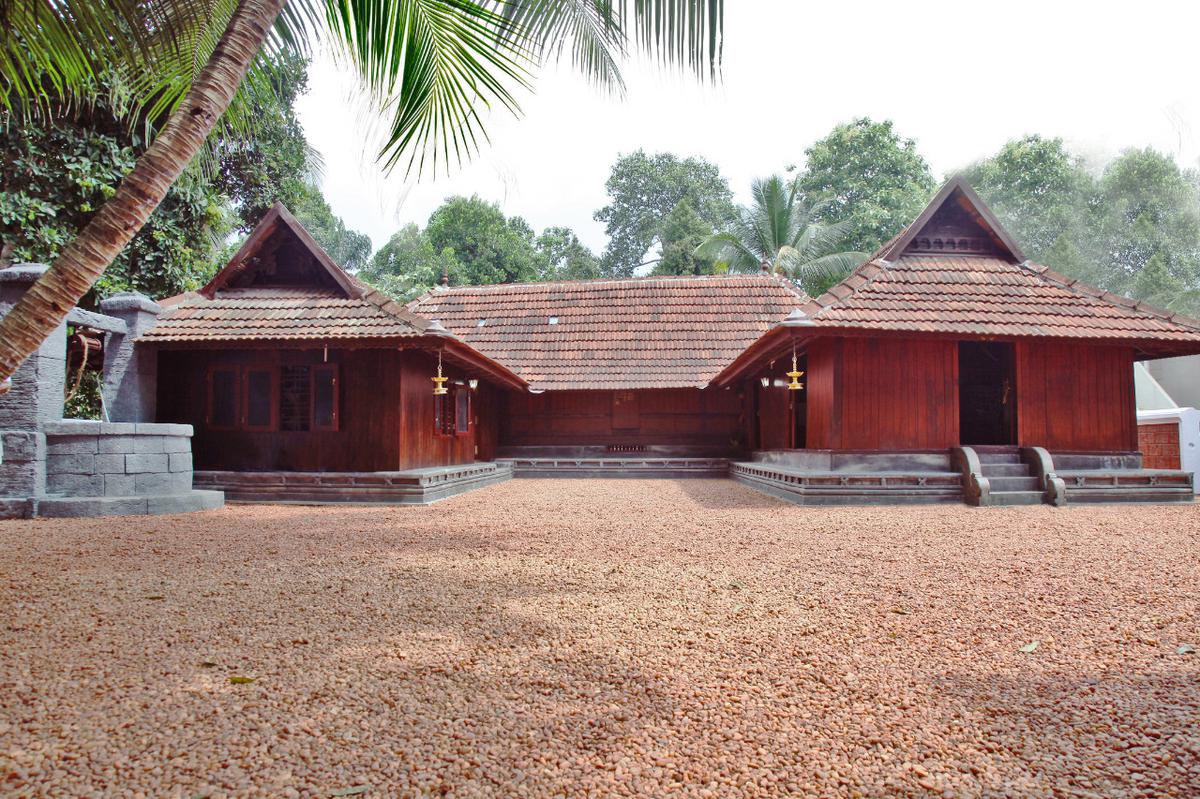
Dharani connects travellers interested in architecture and Responsible Tourism with heritage homes, like Sankaramangalam, in Kerala
The Hindu
The 300-year-old Sankaramangalam tharavadu in Pathanamthitta has opened its doors to hospitality in a unique initiative, Project Dharani that documents it and the intangible heritage associated with it
In a neighbourhood guided by the dictates of modern construction stands the 300-year-old Sankaramangalam Tharavadu. Built on the principles of Kerala architecture, this minimalist and quiet house is located close to the Manimala River in lush green Eraviperoor in Pathanamthitta.
Recently the doors of the tharavadu were opened to Project Dharani, an initiative launched by a group of young architects to combine architecture with responsible tourism. Dharani aims to bring travellers interested in architecture and micro-culture to such spaces across Kerala and document the property and intangible heritage associated with it.
“As this aims to generate consciousness about heritage conservation and make such properties viable, what could be that one platform through which we could help such properties survive, document them and experience living in them?” says Gisny George Kurian, who founded the initiative along with architects Liss Annie Tom, Suchitra C and Akash Puthaparambil.
The four arrived at the idea from their experiences in the field of heritage conservation when they saw large-scale demolition of heritage structures and subsequent loss of micro-culture, of insensitive restoration and damage from careless tourism. Along with their love for sustainable architecture and lifestyle, they also share a common love for travel. The venture was registered as a trust in 2018.
During the Kerala Floods rehabilitation, Gisny and Liss worked extensively with teams salvaging homes in the Alappuzha and Central Kerala belt. During this time, they met many non-architects who were passionate about saving culture and heritage. “Ideally people should live in these houses, but most heritage property owners find the spaces to be a liability. We wanted to make our project a platform for such properties.”
George Kuruvilla, whose forefathers built Sankaramangalam in 1704, says the house is ready to host guests. “The house has historical value. There’s a book on its history and occupants. As a family we could never think of demolishing our heritage.” Titus Sankaramangalam adds that his grandfather, the seventh generation of the family, was born in the house. The house underwent restoration three years ago after a carpenter agreed to restore it with materials and style as before. The family members, now spread out across the world, use it when possible.
“We have identified more than 10 such heritage properties to explore,” says Liss, who teaches architecture and planning at NIT, Kozhikode. Some of the properties that the group has identified are Mitra Niketan in Idukki, Kenoth Mana in Kannur and a homestay in Vagamon.













